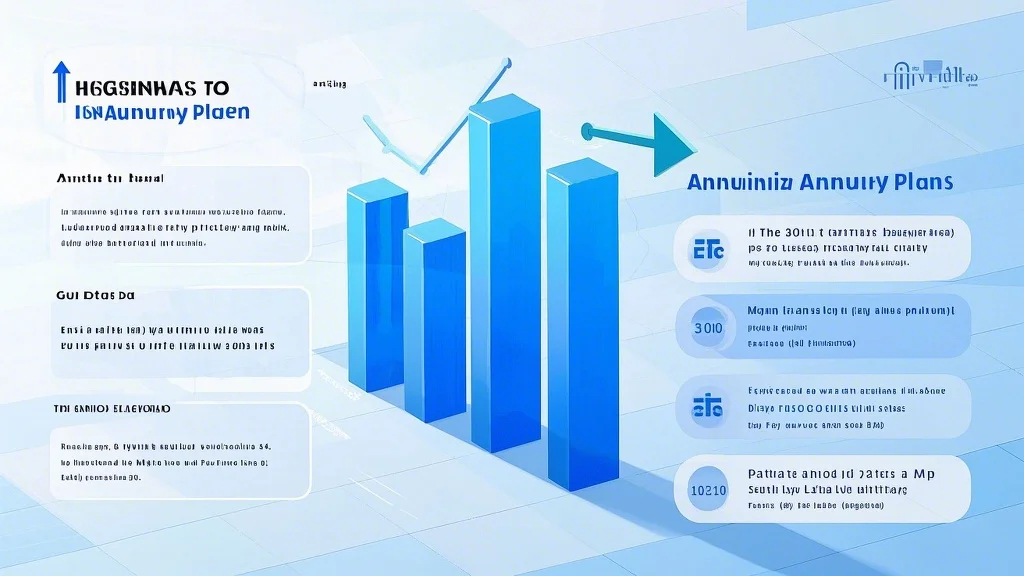High-yield annuity plans offer attractive returns, but they come with significant risks. This article explores the potential rewards and pitfalls of these financial products, helping you make informed decisions about your retirement planning.

Understanding High-Yield Annuity Plans and Their Rewards
When it comes to retirement planning, one of the most attractive options for investors is high-yield annuity plans. These financial products promise higher returns compared to traditional savings accounts or CDs, making them an alluring choice for those seeking to grow their wealth. However, before jumping into such plans, it’s crucial to understand both the potential rewards and the associated risks.
Annuity plans are essentially contracts between the investor and an insurance company. In exchange for a lump sum or regular payments, the investor receives a steady income stream during retirement. High-yield annuity plans, as the name suggests, offer higher payouts compared to standard annuities. These plans are structured to provide significant returns, often through variable or indexed components that tie their performance to market indices.
One of the primary rewards of high-yield annuity plans is the potential for substantial returns. Unlike fixed annuities, which offer predetermined interest rates, high-yield plans allow investors to participate in the growth of the market, potentially earning far more than they would with a fixed plan. This makes them an appealing option for risk-tolerant individuals who are willing to trade stability for the possibility of greater rewards.
Another advantage of these plans is the tax-deferred growth they offer. Investors can enjoy tax-free accumulation of earnings until they start receiving payouts, which can be a significant benefit for those in higher tax brackets. Additionally, annuities provide a guaranteed income stream during retirement, offering peace of mind and financial stability.
However, it’s essential to recognize that high-yield annuity plans come with a level of complexity. They often involve fees, charges, and Surrender charges if the contract is terminated early. Moreover, the returns are not guaranteed, as they depend on the performance of the underlying investments. This means that while the potential rewards are substantial, so are the risks.
Investors must also consider the credibility of the insurance company offering the annuity. Since annuities are promises to pay out in the future, the financial strength and stability of the issuer are critical. A company with a weak financial foundation may struggle to meet its obligations, putting your retirement savings at risk.
In , high-yield annuity plans offer the promise of higher returns, tax-deferred growth, and a reliable income source during retirement. However, these rewards must be balanced against the risks of market volatility, fees, and issuer credibility.
Navigating the Risks of High-Yield Annuity Plans
While high-yield annuity plans can be a powerful tool for retirement planning, they are not without their risks. Understanding these risks is essential for making informed decisions and ensuring that these plans align with your financial goals.
One of the most significant risks of high-yield annuity plans is market volatility. Since many of these plans are tied to the performance of stocks, bonds, or other investments, their value can fluctuate significantly during market downturns. Unlike fixed annuities, which provide guaranteed returns, high-yield plans leave investors exposed to the ups and downs of the market. This means that while the potential for high returns exists, so does the possibility of losing principal in the event of a market crash.
Another risk to consider is the complexity of the plans themselves. High-yield annuity plans often come with a host of fees, including mortality charges, administration fees, and investment management fees. These costs can eat into your returns, especially if the market underperforms. Additionally, many plans have surrender charges if you withdraw money early or cancel the contract, which can make it difficult to access your funds without incurring significant penalties.
The terms and conditions of high-yield annuity plans can also be quite complicated. For example, some plans may impose caps on the amount of interest you can earn, or they may require you to wait several years before accessing certain features. It’s crucial to carefully review the fine print and fully understand the terms of the contract before committing to a plan.
Longevity risk is another factor to consider. Annuity plans are designed to provide income for life or a specified period, but if you pass away shortly after starting the plan, your heirs may not receive the full benefits of your investment. This can be a concern for those who plan to leave a legacy or ensure that their loved ones are financially secure.
Finally, it’s important to evaluate the financial health of the insurance company offering the annuity. As mentioned earlier, the stability of the issuer is critical, as annuities are ultimately promises to pay. Poorly managed companies or those with weak balance sheets may struggle to meet their obligations, putting your retirement savings at risk.
To mitigate these risks, investors should take several steps. First, they should thoroughly research the insurance company offering the annuity, reviewing its financial strength and ratings from credible agencies. Second, they should carefully assess their own financial goals, risk tolerance, and retirement timeline to determine whether a high-yield annuity plan is the right choice for them.
In conclusion, while high-yield annuity plans can be a valuable addition to a retirement portfolio, they come with significant risks that must be carefully considered. By understanding these risks and taking steps to minimize them, investors can make more informed decisions and better position themselves for a secure and prosperous retirement.
This concludes the article on the risks and rewards of high-yield annuity plans.
